Wednesday, September 25th 2013

AMD GPU'14 Event Detailed, Announces Radeon R9 290X
AMD announced the new Radeon R9 290X, its next-generation flagship graphics card. Based on the second-generation Graphics CoreNext micro-architecture, the card is designed to outperform everything NVIDIA has at the moment, including a hypothetical GK110-based graphics card with 2,880 CUDA cores. It's based on the new "Hawaii" silicon, with four independent tessellation units, close to 2,800 stream processors, and 4 GB of memory. The card supports DirectX 11.2, and could offer an inherent performance advantage over NVIDIA's GPUs at games such as "Battlefield 4". Battlefield 4 will also be included in an exclusive preorder bundle. The card will be competitively priced against NVIDIA's offerings. We're awaiting more details.LiveBlog
"Join the Red Team" AMD SVP client products to the press
"The hair in Tomb Raider changed that game (TressFX)" Riiight.
"We are changing the gaming industry"
AMD is gunning for Ultra HD (3840 x 2160) (R9 290X supports UHD @ 60 Hz)
"New consoles raise the bar with gaming"
"It's been a great two years with the HD 7000 series"
AMD announced the R9 series for enthusiasts and gamers ; R7 for price-conscious buyers
AMD lists out a new product stack
R7 250 and R7 260 under $150, R9 270X under $200, R9 280X $299, and R9 290X
R9 290X Battlefield 4 Edition
"Three pillars of the R9 series: GCN 2.0, 4K, TrueAudio, etc
- DirectX 11.2 and improved energy efficiency
- >5 TFLOP/s compute power
- >300 GB/s memory bandwidth
- >4 billion trig/sec
- >6 billion transistors4X more pixels
- everyday Ultra HD possible
- AMD first to officially support 4K
- Auto-configure 4K resolutions
True Audio Technology
- Revolutionizes game audio, and provides artistic freedom
- Hundreds of more audio channels
- Working with new audio CODEC developers
- Positional audioNot sold on PureAudio. Nothing Dolby didn't try in the 80s, or Yamaha/Creative in the 90s.
Most game engines already have positional-audio
PureAudio based on "25 years of brain research"
WWYSE and FMOD game audio engines support TrueAudio
the industry dumped the idea of buying $100 sound cards for exclusive EAX5.0 years ago
PureAudio reduces CPU Load: AudioKinetics (WYSE creators)And finally, the good parts:"Ruby in that video looks like an older Linda Hamilton" - W1zzardAMD's Press-release for Radeon R9 and R7 series:
AMD Developing its own low-level 3D API in partnership with DICE, called MANTLE
"Join the Red Team" AMD SVP client products to the press
"The hair in Tomb Raider changed that game (TressFX)" Riiight.
"We are changing the gaming industry"
AMD is gunning for Ultra HD (3840 x 2160) (R9 290X supports UHD @ 60 Hz)
"New consoles raise the bar with gaming"
"It's been a great two years with the HD 7000 series"
AMD announced the R9 series for enthusiasts and gamers ; R7 for price-conscious buyers
AMD lists out a new product stack
R7 250 and R7 260 under $150, R9 270X under $200, R9 280X $299, and R9 290X
R9 290X Battlefield 4 Edition
"Three pillars of the R9 series: GCN 2.0, 4K, TrueAudio, etc
- DirectX 11.2 and improved energy efficiency
- >5 TFLOP/s compute power
- >300 GB/s memory bandwidth
- >4 billion trig/sec
- >6 billion transistors4X more pixels
- everyday Ultra HD possible
- AMD first to officially support 4K
- Auto-configure 4K resolutions
True Audio Technology
- Revolutionizes game audio, and provides artistic freedom
- Hundreds of more audio channels
- Working with new audio CODEC developers
- Positional audioNot sold on PureAudio. Nothing Dolby didn't try in the 80s, or Yamaha/Creative in the 90s.
Most game engines already have positional-audio
PureAudio based on "25 years of brain research"
WWYSE and FMOD game audio engines support TrueAudio
the industry dumped the idea of buying $100 sound cards for exclusive EAX5.0 years ago
PureAudio reduces CPU Load: AudioKinetics (WYSE creators)And finally, the good parts:"Ruby in that video looks like an older Linda Hamilton" - W1zzardAMD's Press-release for Radeon R9 and R7 series:
AMD today unveiled the AMD Radeon R9 290X, R9 290, R9 280X, R9 270X, R7 260X and R7 250 graphics cards, AMD's first GPUs in a new era of gaming defined by UltraHD displays, renewed vigor in game engine development, and a new generation of gamers that expect a more immersive entertainment experience. AMD also introduced the world to Mantle and AMD TrueAudio technology, the latest innovations that redefine the GPU by enabling both gamers and game developers with unprecedented audio and performance enhancements for compatible games.- AMD announced its alternative to GeForce Experience, the Gaming Evolved app, built in partnership with Raptr.DirectX 11.1 optimization and 64-bit binaries for BF4 confirmed by DICE, can take advantage of 8-core CPUs.
"The AMD Radeon R9 and R7 Series graphics cards are new GPUs for a new era in gaming," said Matt Skynner, corporate vice president and general manager, Graphics Business Unit, AMD. "This era is shaped by ultra-resolution gaming and an exciting new generation of highly-anticipated games like 'Battlefield 4.' But it's also an era shaped in a very powerful way by our own Unified Gaming Strategy; we've teamed up with the world's top game developers to establish a comprehensive portfolio of games that you can maximize to their full potential only with AMD Radeon graphics."Mantle and Graphics Core Next: Simplifying Cross-Platform Game Development
The award-winning Graphics Core Next (GCN) architecture in the AMD Radeon R9 and R7 Series graphics cards continues to serve as a driving force behind the Unified Gaming Strategy, AMD's approach to providing a consistent gaming experience on the PC, in the living room or over the cloud -- all powered by AMD Radeon graphics found in AMD graphics cards and accelerated processing units (APUs). The four pillars of the Unified Gaming Strategy -- console, cloud, content and client -- come together with the introduction of Mantle.
With Mantle, games like DICE's "Battlefield 4" will be empowered with the ability to speak the native language of the Graphics Core Next architecture, presenting a deeper level of hardware optimization no other graphics card manufacturer can match. Mantle also assists game developers in bringing games to life on multiple platforms by leveraging the commonalities between GCN-powered PCs and consoles for a simple game development process.
With the introduction of Mantle, AMD solidifies its position as the leading provider of fast and efficient game development platforms. Mantle will be detailed further at the AMD Developer Summit, APU13, taking place Nov. 11-13 in San Jose, Calif.
AMD TrueAudio Technology: World's First Programmable Audio Pipeline
AMD TrueAudio technology marks a new frontier in realism for PC gamers. AMD TrueAudio technology empowers game developers with a programmable audio pipeline on the GPU, inviting them to put their unique artistic fingerprint on in-game audio in the same way that the programmable graphics pipeline brought unfettered artistic vision to PC graphics. Enabled games can feature more realistic environmental dynamics, a richer tapestry of sound effects, breathtaking directional audio and more.
AMD TrueAudio technology enhances audio realism by simulating the human brain's perception of real-world sound, working in concert with the user's existing audio hardware to recreate a lifelike experience in upcoming games like "THIEF " by Square Enix or "Lichdom" by Xaviant Games.
AMD Multi-Display Technology: Redesigned for Ultra-resolution Gaming
The arrival of the next-generation AMD Radeon graphics cards also marks a new chapter in AMD's historic support for stunning display configurations. AMD Radeon R9 and R7 Series graphics cards are made for gaming on UltraHD (3840x2160) displays, including support for non-tiled 2160p60 displays with a future AMD Catalyst driver release. In addition, gamers more accustomed to AMD Eyefinity multi-display technology will be freed to use virtually any combination of display outputs when connecting matching monitors to the DVI or HDMI outputs on their system.
AMD Radeon R9 and R7 Series graphics cards will be available for purchase in the near future.
AMD Developing its own low-level 3D API in partnership with DICE, called MANTLE
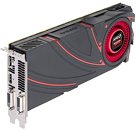



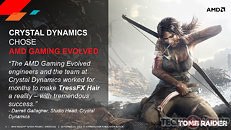

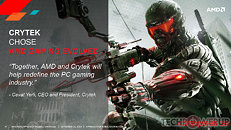

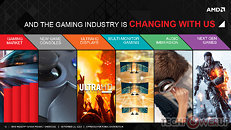
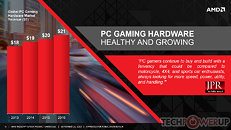
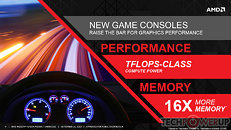
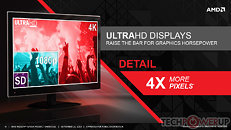
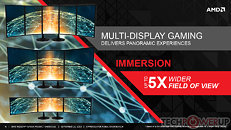


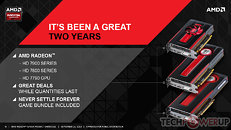
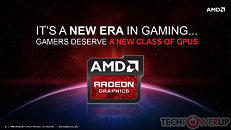
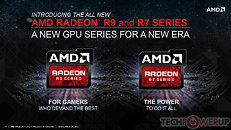
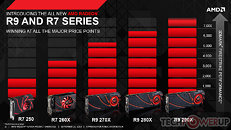
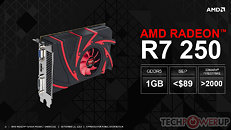
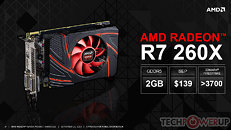
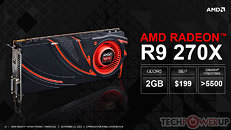
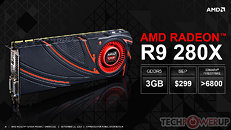
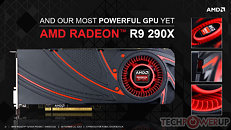
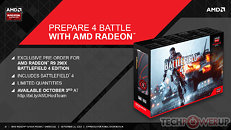

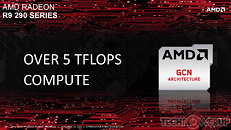
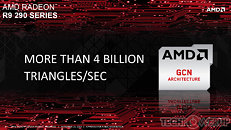
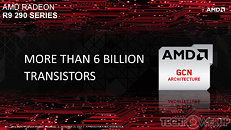
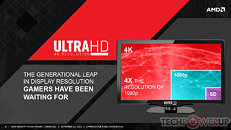
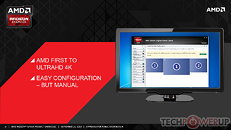
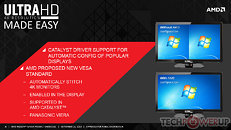


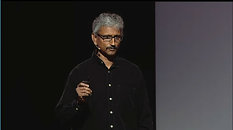



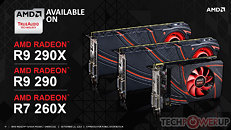


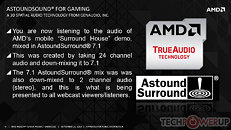

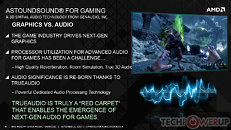
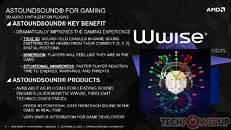

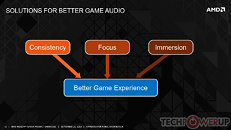
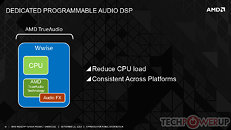
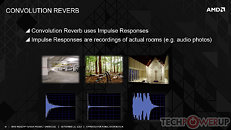
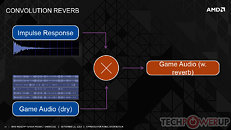
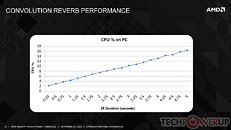
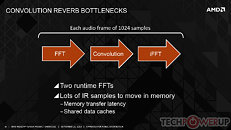
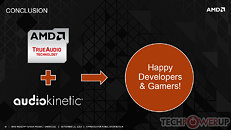

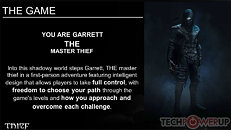

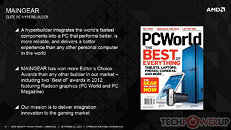
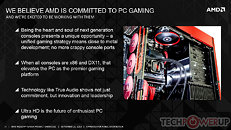
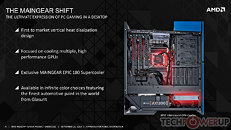
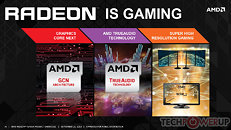
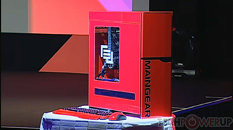
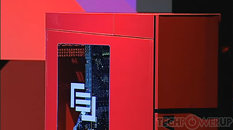
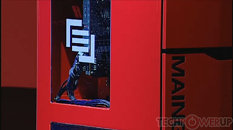

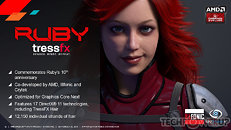



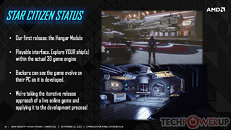





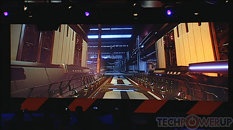
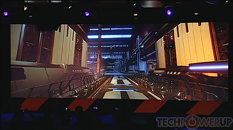
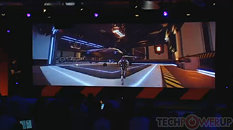
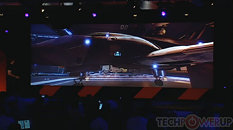
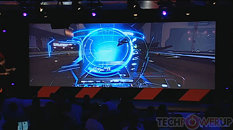
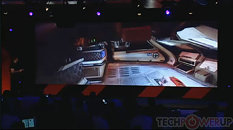
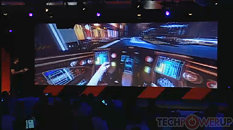
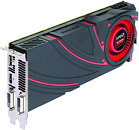

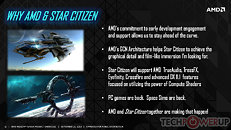
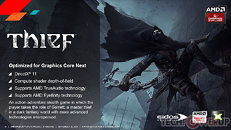
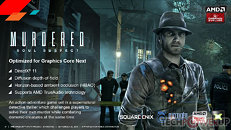
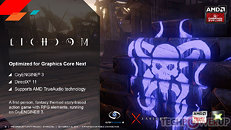



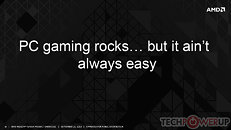
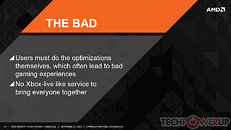
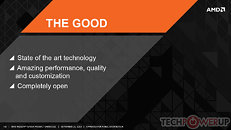

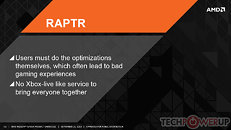
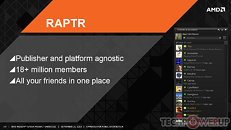

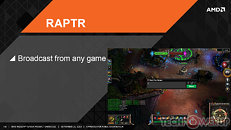




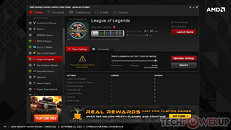

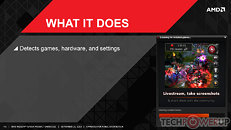
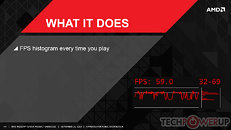

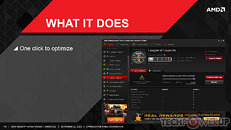


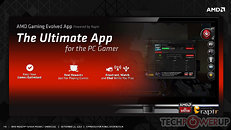


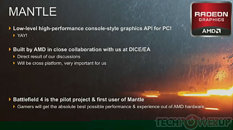
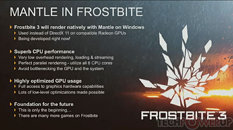
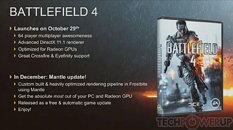

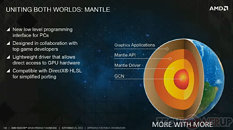
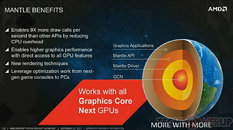
186 Comments on AMD GPU'14 Event Detailed, Announces Radeon R9 290X
BTW: Here's a pretty clear picture of the Crossfire finger contacts you are talking about.
EDIT: Just found this at Tech Report.
So I don't have to do all of this : www.techpowerup.com/forums/showpost.php?p=2986178&postcount=39
:D
Now we just have wait for availability, hoping to grab one before BF4 releases.
Surprised of 1st hand audio integration on them... why?On a overclocked i7, yes. However, I'm willing to bet AMD stupidly do their in-house runs with stuff like A10-6800 or FX-8350 tops.
Edit: Examples
-> Stock R7970 + stock FX-9590 -> ~5700 marks in FS
-> Stock R7970 + stock i7-3820 -> ~7100 marks in FS
But that's besides the point. We have no clockspeed info, no shader count, and no real testing done. Those scores could change.
Anyway, to me "immersive" = V.R. and I suppose that AMD has reason for going with this, although the real use might not be immediately apparent. What does strike me as odd about the whole thing is the fact that Microsoft seems to be one step ahead of AMD here, and that the butt-load of Win7 users that are not likely to change OS any time soon, plus some hardware restrictions, will make this TrueAudio a difficult sell for some time yet.
TressFx was open to anyone. I think all of this new stuff will too. Of course, it will run best on AMD hardware.
i hope amd doesnt drop the opengl support too..
i havea different question. how does one utilize the audio features? does the graphics card communicate with a sound device or wtf?
hence the extended discussion about audio and nothing concrete about graphics ability.
very disappointing pile of crap presented yesterday.
Point being, I wouldn't swear by it, but I'm pretty sure AMD's scores are based on a FX-8350, FX-9590 tops, system (PCI-Express 2.0 reminder as well), which doesn't mean much when benching a lower end card, but will hold back considerably faster cards, in synthetics especially.Drop OGL support as in drop Linux support? LOL, never.
Especially since there's a huge chance that VALVE's SteamMachines/SteamOS will be based on AMD APUs.
Edit: I'm surprised no one is commenting on AMD's response to nVidia's "GeForce Experience" or whatever it's called.
well, its a caddish datamining operation for monitoring what programs users use (games at this stage, but theres certainly much more info to mine). i wonder what or who decides the optimal game setting (users may broadcast their setting back to amd, but the most used setting doesnt have to be the smoothest).. and amd = copy cat as with the boost/turbo feature.
for years all chips have had performance steps etched into their low level microcode and there is no difference at all between how that and boost works, the only change is thermal/power monitoring ,err no actually they were doing that anyway to just not as well
my guitar amp goes to 11 too btw i tipexed it on its way better now
oh and i understand it all no worries , i get that they use it better now to auto oc(:laugh::rockout::laugh:) when a game is not loading it up as much in heat or load terms and thats why I Dont own a GK104 based card.
thank you amd
your third is just pc,, add all sony ,xbox, and nintendo gamers and you have something that makes so much sense it would be stupid not to, though i agree other Api's should still be coded for but imho just Opengl and Not Dx, in fact ima say it,,,, 5 years and Dx is a dodo:pimp: